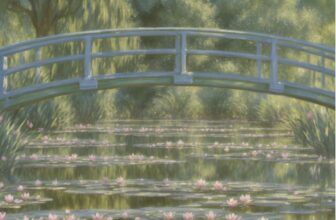
The Hollywood Sign Art Painting
Perched atop the hills of Los Angeles, commanding attention from miles away, stands an iconic symbol that embodies the glitz, glamour, and allure of the entertainment industry: the Hollywood sign. With its towering white letters set against the backdrop of the California sky, the sign has become an enduring emblem of the American Dream and a beacon of hope for aspiring actors, filmmakers, and dreamers around the world. Yet, beyond its role as a landmark, the Hollywood sign has also served as a canvas for artists seeking to explore themes of celebrity culture, urban identity, and the transformative power of art.
Originally erected in 1923 as a real estate advertisement for a housing development called “Hollywoodland,” the sign has undergone numerous transformations over the decades, reflecting the changing fortunes and aspirations of the city it represents. From its humble beginnings as a promotional gimmick to its current status as a global icon, the Hollywood sign has captured the imagination of artists, photographers, and filmmakers alike, inspiring countless works of art that explore its symbolic resonance and cultural significance.
One of the most famous depictions of the Hollywood sign in art is found in the paintings of American artist Ed Ruscha. Known for his minimalist approach and deadpan humor, Ruscha’s iconic series of paintings featuring the Hollywood sign offer a wry commentary on the mythos of celebrity and the manufactured glamour of Tinseltown. In works such as “Hollywood,” “Hollywood Blvd.,” and “Hollywood is a Verb,” Ruscha reduces the sign to a graphic motif, stripping away its context and reducing it to its essential form.
Through his use of bold colors, stark compositions, and unconventional perspectives, Ruscha invites viewers to reconsider their preconceptions of Hollywood and to reflect on the underlying tensions between reality and illusion, fame and anonymity. In doing so, he challenges the viewer to confront the paradoxes and contradictions inherent in the pursuit of stardom and the cult of celebrity.
In addition to painting, the Hollywood sign has also served as a subject for photographers seeking to capture its iconic silhouette against the ever-changing backdrop of the Los Angeles skyline. From the panoramic vistas of the Hollywood Hills to the gritty streets of downtown LA, photographers have sought to explore the sign’s visual impact and its role as a symbol of aspiration and ambition.
One photographer who has explored the Hollywood sign in his work is the acclaimed artist David LaChapelle. Known for his surreal and hyper-realistic images, LaChapelle’s photographs of the Hollywood sign offer a unique perspective on the intersection of art, commerce, and culture in contemporary society. In his series “California Dreaming,” LaChapelle juxtaposes the Hollywood sign with images of consumer culture and mass media, highlighting the ways in which the pursuit of fame and fortune shapes our collective consciousness.
Through his use of vibrant colors, extravagant costumes, and elaborate sets, LaChapelle creates a visual spectacle that blurs the boundaries between reality and fantasy, inviting viewers to question their assumptions about the nature of success and fulfillment. By placing the Hollywood sign at the center of his compositions, he underscores its symbolic importance as a symbol of aspiration and desire, while also critiquing the commercialization and commodification of the entertainment industry.
Beyond painting and photography, the Hollywood sign has also inspired a wide range of multimedia artworks, including sculpture, installation, and performance art. In recent years, artists such as Shepard Fairey, Banksy, and Jenny Holzer have used the sign as a platform for social commentary, political activism, and cultural critique.
One notable example is the work of artist Kristin Sakoda, who created a series of neon sculptures inspired by the Hollywood sign. In her installation “Bright Lights, Big City,” Sakoda reimagines the iconic letters of the sign as glowing symbols of aspiration and desire, while also reflecting on the darker side of celebrity culture and the pursuit of fame.
Through her use of light and space, Sakoda creates an immersive environment that invites viewers to contemplate the seductive allure of Hollywood and the elusive nature of success. By transforming the Hollywood sign into a luminous spectacle, she challenges the viewer to reconsider their own relationship to fame and fortune, and to question the values and priorities that shape our society.
In conclusion, the Hollywood sign serves as a rich source of inspiration for artists seeking to explore themes of identity, ambition, and the transformative power of art. From its humble beginnings as a real estate advertisement to its current status as a global icon, the Hollywood sign has captured the imagination of artists and audiences alike, inviting us to reflect on the enduring allure of Tinseltown and the dreams it represents. As artists continue to explore the sign’s symbolic resonance and cultural significance, it will remain a powerful symbol of the American Dream and a testament to the enduring power of creativity and imagination.






